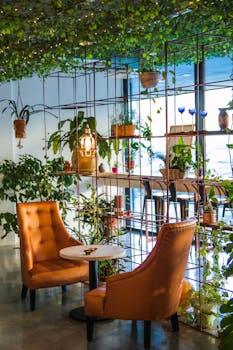
This is a pretty neat tip we are sharing today, How to Clean Indoor Houseplants and Shine the Leaves! Plus we have some easy plant food tips too!
You can also use this for any outdoor potted plant that is looking dull or has a powdery substance on it.
First I will share with you how to do it, and then I want to share with you WHY this actually works.
How to Clean Indoor Houseplants & Shine the Leaves!

Ingredients:
Dairy Milk
Water
Epsom Salt ( Regular not scented )
Directions:
First, mix up a ratio of milk to water. About 40% milk to 60% water. So, for my small little spray bottle I did ½ cup of milk with ¾ cup water. You can do as little or as much as you need. Next spray your plants leaves underneath and on top. Rub gently with a cloth, then wipe off with a clean dry cloth.
You will notice immediately how it shines up and removes any residue the plant has on it. When you look the next day, it almost looks like fake plant with the shine!
For plant food: Believe it or not, milk has some beneficial ingredients that are great for plants. In addition, I also like to make an Epsom salt spray which you can use every few weeks.
In a spray bottle, mix 2 cups of water to 1 tbsp of Epsom salt, lightly spray the plant leaves. Don’t rub off, allow it to soak in.
NOTE: You do NOT have to use the Epsom salt spray, you can just use the milk spray. I don’t typically use them on the same days anyways, but it is nice to have an additional plant food option.


Chemist Tips

Epsom salt is one of the best natural fertilizers for houseplants. Magnesium and sulfate (which is what Epsom salt actually is) are beneficial for indoor plants to get bright, vivid leaves. Since they don’t get much sunlight, it really gives the leaves an extra boost.
Epsom salt spray can be used every 2-3 weeks.
The other fertilizer I use is my slow release plant food from the book . I put that around the base every 3-4 weeks and it makes such a difference!
We also have our liquid plant food . Many readers use this for indoor plants too with success. I typically prefer this for outdoor plants since it was designed for that.

FAQS
Why is milk used?
Using milk as a leaf shiner is an old gardening/science tip. I learned about it when I took horticulture, but decided to study it more in depth to see if it was really something useful.
Milk contains anti-microbial, anti-fungal/anti-bacterial properties that treat powdery mildews and other issues that cause plants to have that dull, white look.
Another important substance in milk is the proteins. Proteins help dissolved residue on the leaf to brighten it up.
Calcium is a key nutrient for plants, so milk also helps internally.
Can I substitute other milk?
You must use dairy milk to get the shining benefits. Other milks like almond and cashew do not have active cultures like this, so it doesn’t work. I have tried it!
Should I use skim or whole milk?
I have done this with whole milk, reduced fat, and skim milk. I like the way reduced fat and skim work best. They have less fat, so they mix better with water to create a smooth spray.
Whole milk does work, I just didn’t think it shined it as much.
Will just using water work?
No, it doesn’t work as well. Water will clean the leaves, but it doesn’t get rid of some heavy duty residue. It does not create the shine.
Does this have an odor?
NO! In fact, once you mix the water with milk, all milk smells go away. It will not leave a bad scent or sour odor over time.
Doesn’t this attract bugs or gnats?
I have never had this attract more bugs. You wipe off the leaves once you spray, so no substance is left over. (P.S – if you do struggle with indoor bugs, the granite/stone mult-purpose cleaner on page 13 is what I use to treat them. I just spray the soil and it kills/deters bugs, it’s amazing stuff)
Do I have to use Epsom Salt?
Epsom salt is strictly optional, it has no bearing on the leaves shining or not. The Epsom salt is just a great option for added nutrients for all houseplants. I do not use these together. The milk spray I use as needed, the Epsom salt spray I will use every 3-4 weeks.
Article source: http://www.chemistrycachet.com/how-to-clean-indoor-houseplants/
SHARE IT SO OTHERS CAN FIND THE BEST GARDENING INFO


